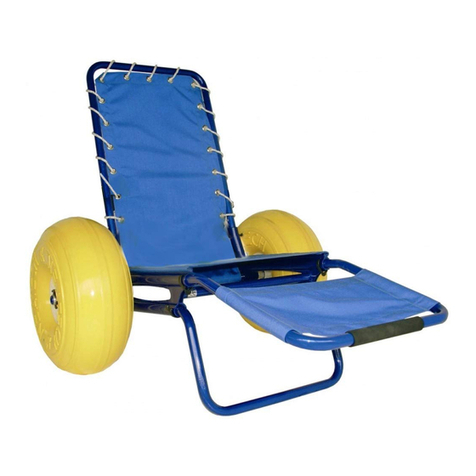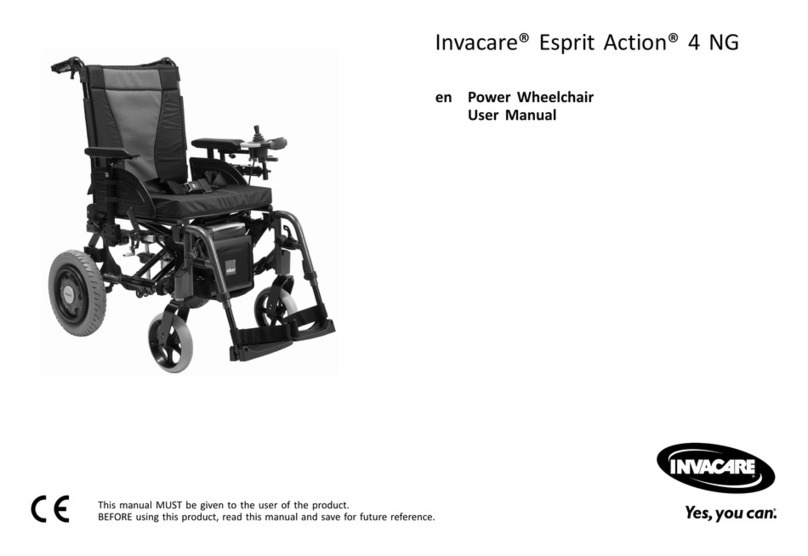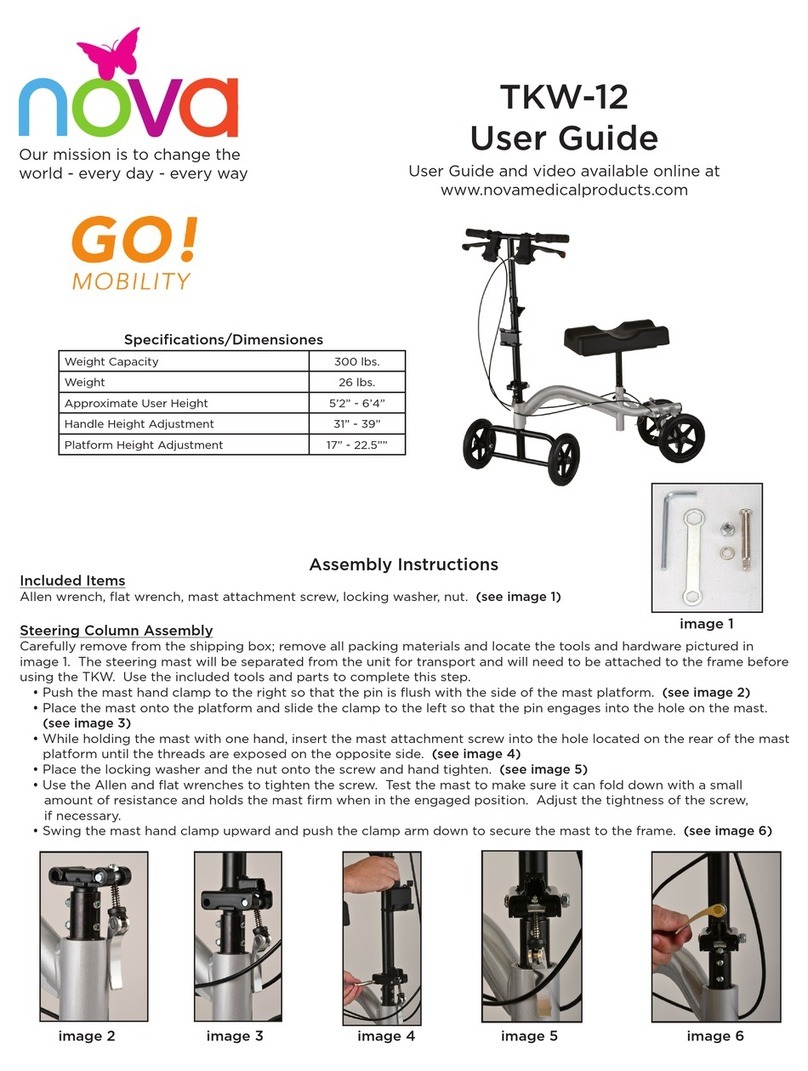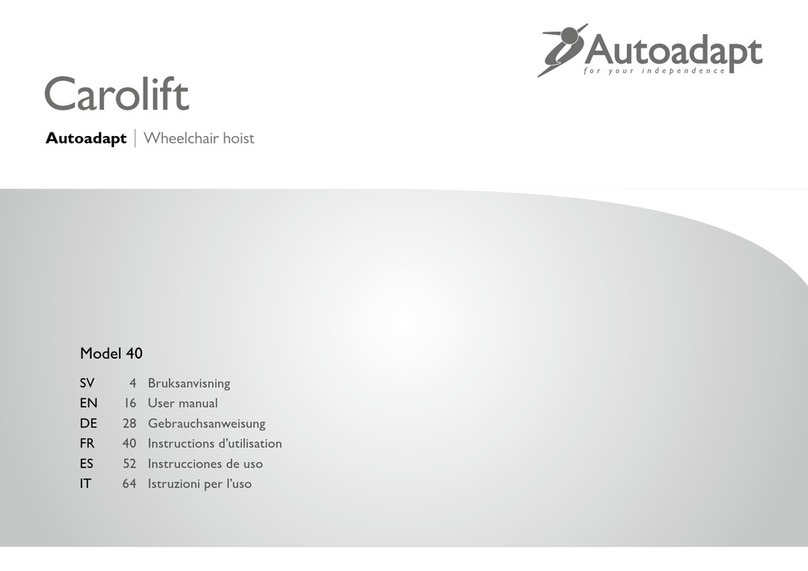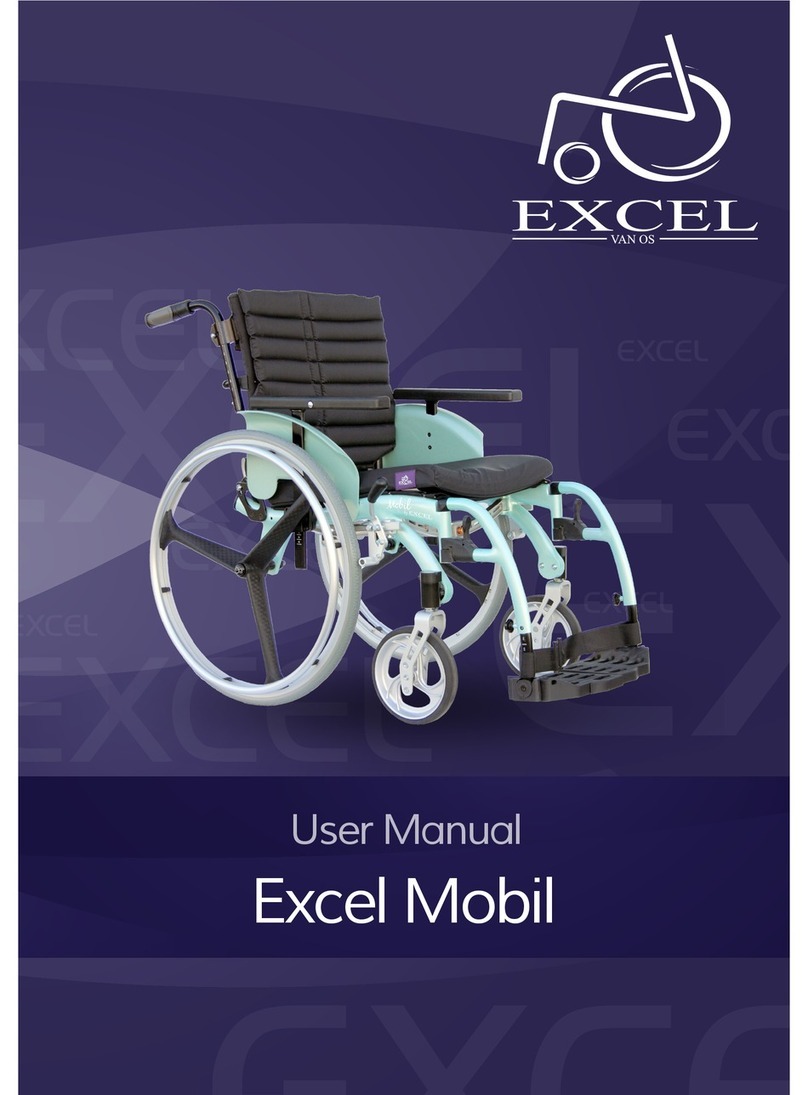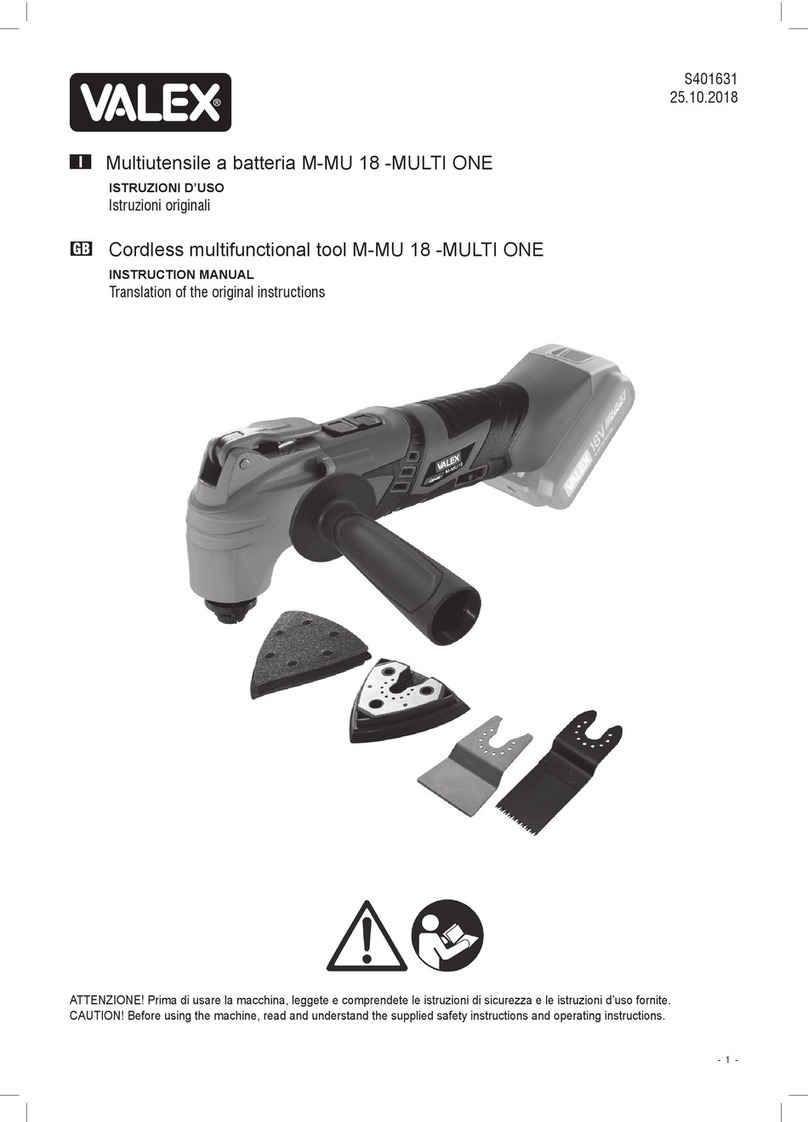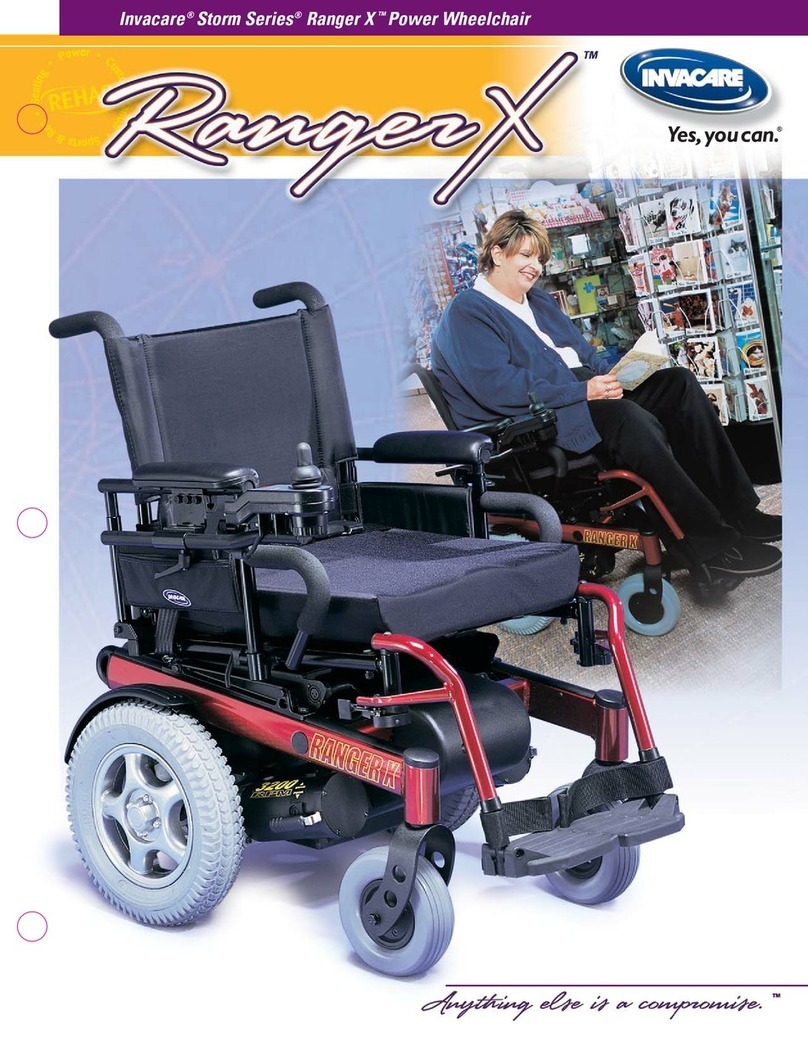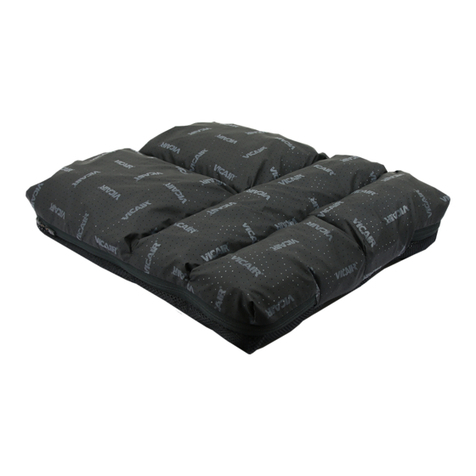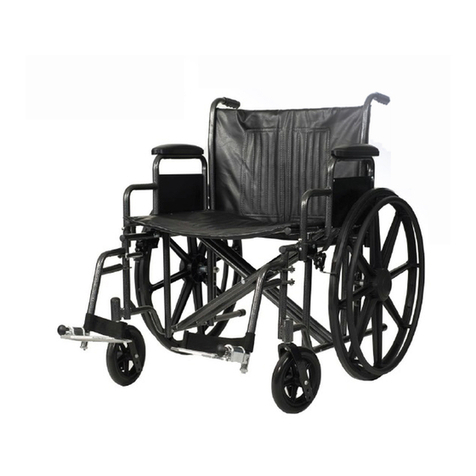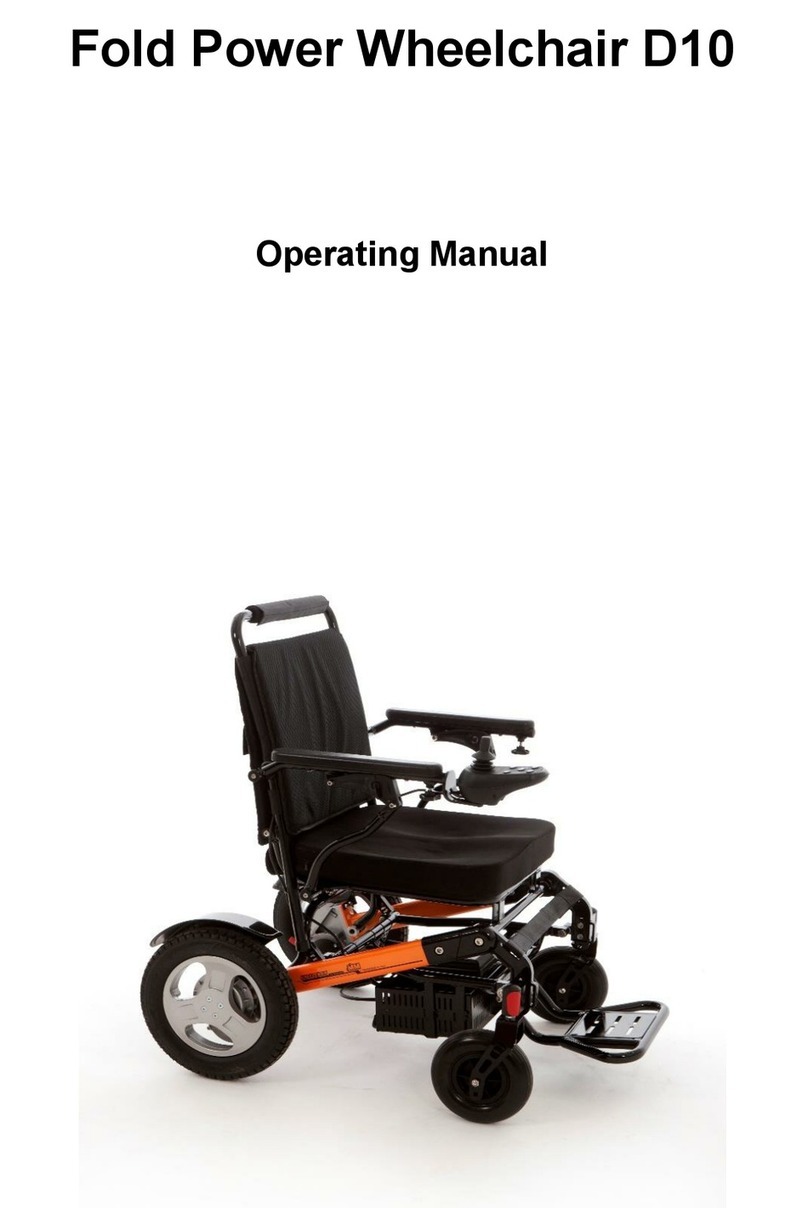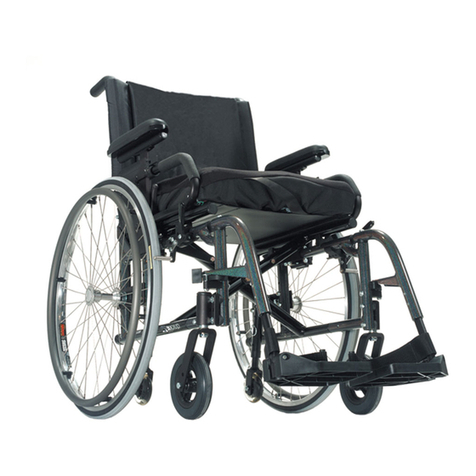Costway AT4621 User manual

USER'S MANUAL
FoldableWheelchair and Scooter Carrier
AT4621
TIPS:
Your suggestions and comments for Costway are really important to us!
We sincerely solicit you to go back to our shop and leave a good rating in just a
simple click. It would be quite encouraging if you could kindly do so like below:
February 24, 2018
Great product so far. Fast delivery, easy setup, and working without any issues.
Great products so far
With your inspiring rating, Costway will be more consistent to offer you
EASY SHOPPING EXPERIENCE, GOOD PRODUCTS and EFFICIENT SERVICE!
UNITED STATES
CANADA UNITED KINGDOM
GERMANY
FRANCE
ITALY
SPAIN
JAPAN
RUSSIA
AUSTRALIA
US office:Fontana
UK office:Ipswich

WARNING! Read all instructions. Failure to follow all instructions listed
below may result in serious injury.
SAVE THESE INSTRUCTIONS
1. Area safety
a. Make sure the area in which the Carrier is assembled is clean and well lit. Cluttered or dark areas
invite accidents.
b. Keep children and bystanders away while using the Carrier. Distractions can cause you to lose
control.
2. Personal safety
a. Stay alert, watch what you are doing and use common sense when using the Carrier. Do not use
the Carrier while you are tired or under the influence of drugs, alcohol or medication. A moment of
inattention while using the Carrier may result in serious personal injury.
b. Use safety equipment. Wear ANSI- approved safety impact eye goggles and heavy duty work
gloves when setting up or taking down the Carrier to avoid eye injury and/or injury from sharp edges.
Safety equipment such as non-skid safety shoes will reduce personal injuries.
c. Do not overreach. Keep proper footing and balance at all times. This enables better control of the
Carrier in unexpected situations.
d. Dress properly. Do not wear loose clothing or jewelry. Keep your hair, clothing and gloves away
from moving parts. Loose clothes, jewelry or long hair can be caught in moving parts.
3. Carrier use and care
a. Use the correct Carrier for your application. The correct Carrier will do the job better and safer at the
rate for which it was designed.
b. Store the Carrier out of reach of children and do not allow people unfamiliar with the Carrier or these
instructions to use the Carrier. Use of carrier by untrained people may not be safe.
c. Maintain the Carrier. Check for misalignment or binding of moving parts, breakage of parts and any
other condition that may affect the Carrier’s operation. If damaged, have the Carrier repaired before
use. Many accidents are caused by poorly maintained equipment.
d. Use this Carrier in accordance with these instructions and in the manner intended for this particular
type of product, taking into account the area conditions and the task to be performed. Use of this
Carrier for operations differentfrom those intended could result in a hazardous situation.
4. Service
a. Have this Carrier serviced by a qualified repair person using only identical replacement parts. This
will ensure thatthe safety of the Carrier is maintained.
1. This Carrier has a maximum weight capacity of 500 pounds.Do not exceed the 500pound
capacity. Be aware of dynamic loading! Sudden load movement may briefly create excess load
causing product failure.
2. Do not exceed 55 MPH with the Carrier attached.
3. Always secure the Carrier as close to your vehicle as possible, minimizing the distance of the Carrier
and its load from your vehicle.
4. Center load on Carrier.
5. Inspect before use; do not use if parts are damaged or broken. Check all bolts and nuts in the Carrier.
Do not use if damaged.
6. Turn off the vehicle’s ignition and set the parking brake before loading or unloading the Carrier.
7. Do not ride on wheelchair or scooter being loaded onto or unloaded from the Carrier.
8. Make sure to read and understand all instructions and warnings set forth by the manufacturer of the
vehicle that the carrier will be attached to.
General Safety Rules
Specific Safety Rules
9. Prior to transporting a load make sure the Ramp (13) of the Carrier is in its upright position and locked in
place with the Safety Pin (11).
10.Both of the Carrier’s Ramp (13) ends must rest flat on a solid, level, and flat surface when loading and
unloading an object.
11.This product is not a toy. Keep it out of reach of children.
12.Never ride a motorized object (powered scooters, lawn tractors, ATV’s, etc.) onto or off the Carrier.
Only load/unload with the motorized object empty of cargo and people.
13.Follow D.O.T. (Department of Transportation) guidelines for installation and use.
14.Make sure to secure the load on the Carrier with straps, and/or tie-downs before transporting.
15.Only use the Carrier with a properly installed Class III or Class IV 2 inch hitch receiver capable of
supporting the Carrier and its load.
16.Maintain labels and nameplates on the Carrier. These carry important safety information.
17.The warnings, precautions, and instructions discussed in this instruction manual cannot cover all
possible conditions and situations that may occur. It must be understood by the operator that common
sense and caution are factors which cannot be built into this product, but must be supplied by the
operator.
Max. Weight Capacity
500 Pounds
Vehicle Hitch Receiver Size 2” (Fits all Class III or Class IVtrailer hitches.)
Carrier Bed Dimensions
48-3/4” X 27-3/4”
Carrier Ramp
42” X 26-1/2”
Read the entire Important Safety Information section at the beginning of this manual including all text
under subheadings therein before assembly of this product.
Refer to Diagram and Parts list on end of the manual.
1. Set the Body Assembly (1) on a flat, secure work area able to support weight of Carrier.
2. Attach Reflectors (15) on side of Body Assembly (1) by using Spring Washers (16) and Nut (17).
3. Use Bolts (3),and Lock Nuts (4) to attach the Hitch Assembly (2) to the underside of the Bed, don’t
tighten bolts first.
NOTE: The Hitch extension should face opposite the side with the reflectors. Then secure them with
Bolts (3) and Lock Nuts (4), make sure that all hardware is tight.
4. Swing up the Ramp (13) in its upright position and locked in place with the Safety Pins (11).
5. Slide Anti-tilt Device (7) onto the Hitch Assembly (2). With assistance, lift Carrier up and insert Hitch
Bar into vehicle’s receiver hitch. Align hole in Hitch Bar with hole in vehicle’s receiver hitch.
6. Insert Pin (5) through holes in both hitches and fasten in place using Lock Pin (6). Slide Anti-tilt Device
(7) against the Receiver, tighten the Bolts and Washer (9) to lock with Anti-title Device (8) to eliminate
gap between receiver and hitch bar.
7. Connect the folding machinery (20) to the hitch assembly (2) by Screw Bolt (18) and Nut (19) lock in
the first hole (near cargo carrier end), use hitch pin (5) and clip (6) to lock carrier in to horizontal and
vertical position as need (make sure clip is secured in place)
Read the entire Important Safety Information section at the beginning of this manual including all text
under subheadings therein before use of this product.
WARNING! Do not exceed the Carrier’s maximum weight capacity of 500 pounds.
WARNING! All persons not involved in loading or unloading the Carrier should stand clear of the unit.
1. Once Carrier is fastened to hitch, lower Ramp. Do this by removing the Safety Pins (11), which
unlocks the Rampfrom the Body. Lower the Ramp to the ground.
Specifications
Assembly Instructions
Operation Instructions

CAUTION! Make sure the feet of the Ramp rest flat on a solid, level surface during the loading and
unloading of Wheelchair or Scooter.
2. With assistance, push the Wheelchair/Scooter up the Ramp and onto the Carrier Bed. Make sure the
load is centered on the Carrier.
3. Secure Wheelchair/Scooter in place using appropriate tie-downs or ropes (not included.) Fasten
tie-downs or ropesto the Tie-Down Hooks.
4. Once load is secure, swing Ramp up. Lock ramp against Body by using Safety Pins (11).
5. The load (wheelchair, scooter, ATV, etc.) can now be transported.
6. To unload the vehicle, untie the tie-downs or ropes from the Tie Down Hooks and lower the Ramp.
7. With assistance, carefully unload Wheelchair/Scooter from Carrier. Once Carrier has been unloaded,
raise Ramp and lock back into place.
WARNING! Do not transport without locking Ramp to Carrier.
WARNING! Do not ride on Wheelchair, Scooter orother vehicle that isbeing loaded onto or
unloaded from the Carrier.
Maintenance and Servicing
Procedures not specifically explained in this manual must be performed only by a qualified
technician.
To prevent serious injury from accidental operation:
Remove any load from the unitbefore performing any inspection, maintenance, or cleaning
procedures.
To prevent serious injury from EQUIPMENT failure:
Do notuse damaged equipment. If abnormal noise or vibration occurs, have the problem corrected
before further use.
Inspection, Maintenance, and Cleaning
1. BEFORE EACH USE, inspect the general condition of the Carrier. Check misalignment, loose or
damaged parts and any other condition that may affect its safe operation.
2. BEFORE EACH USE, make sure any dirt, debris, oil, grease, etc. are cleaned off the Carrier. Clean
the Carrier with a clean, moist cloth. Do not use solvents.
3. PERIODICALLY, check all hardware for tightness.
Part #
Description
Qty.
Part #
Description
Qty.
1
Body Assembly
1
11
Safety Pin
2
2
Hitch Assembly
1
12
Bolt M8x50
2
3
Bolt M8x40
8
13
Ramp
1
4
Lock Nut M8
13
14
Bolt M8x70
3
5
Hitch Pin
2
15
Reflector
2
6
Clip
2
16
Spring Washer 5
4
7
Anti-tilt Device - U Bolt
1
17
Nut M5
4
8
Anti-tilt Device - Frame
1
18
Screw Bolt
1
9
Anti-tilt Nut Kit
2
19
Nut
1
10
Rod
2
20
Fold Machinery
1
PARTS LIST & ASSEMBLY DIAGRAM
7
8
9
Other Costway Wheelchair manuals

Costway
Costway BA7866CF User manual

Costway
Costway BA1149 User manual

Costway
Costway BA1006 User manual

Costway
Costway BA7007 User manual

Costway
Costway BA7864CF User manual

Costway
Costway JH10003 User manual

Costway
Costway SP36345 User manual

Costway
Costway BA7871CF User manual

Costway
Costway BA7863CF User manual

Costway
Costway BA7868CF User manual


